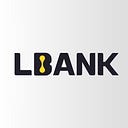What Is Decentralised Finance? Top 5 Trends Worth Watching in DeFi
Decentralised finance (DeFi) is a fast-growing sector of the financial industry that is changing the way people interact with their money. To understand DeFi, we need to first understand what it means and how it has performed on the market over the past few years.
What Is DeFi?
Decentralised finance refers to a financial system that operates on a blockchain network, such as Ethereum, and is thus not controlled by any single entity or organisation.
DeFi aims to provide financial services and products that are transparent, accessible, and secure, without the need for traditional intermediaries such as banks and financial institutions.
DeFi services include decentralised exchanges (DEXs), yield farming, lending and borrowing platforms, insurance, and stablecoins, among others.
By leveraging blockchain technology, DeFi enables users to have full control over their assets, reduce the risk of centralization and access a wider range of financial services.
Overview of the DeFi market
In 2020, the growth of DeFi took the world by storm, as Total Value Locked (TVL) — a measure of DeFi transaction value — grew by an astonishing 14 times its original size. This explosive growth was driven by a number of factors, including increased interest in cryptocurrencies and blockchain technology.
As DeFi continued to gain traction in 2021, the TVL more than quadrupled, reaching a peak value of $112.07 billion.
However, by June 2022, the decentralised finance market size was less than 80 billion dollars. This staggering decline was due to the crash of cryptocurrency Terra (LUNA) and its ecosystem stablecoin TerraUSD (UST) in May 2022.
Despite the market downturn, DeFi continued to thrive, with a number of new protocols and platforms entering the space. One of the most notable developments was the rise of decentralised autonomous organisations (DAOs), which are run by code rather than by a central authority. This innovation allowed for more transparent, community-driven decision-making, and further contributed to the growth of DeFi.
In addition to these developments, 2022 saw a number of high-profile partnerships and investments in DeFi, including investments from traditional financial institutions and partnerships with well-known technology companies. This growing recognition of the potential of DeFi helped to solidify its place in the financial landscape and demonstrate its viability as a long-term solution.
According to DeFiLlama, the TVL is currently sitting at $47.39 billion.
5 DeFi Trends to Watch Out For
The decentralised finance (DeFi) sector has rapidly evolved since its inception, and has already disrupted traditional finance in a big way. DeFi is a rapidly growing market with a lot of innovation happening at breakneck pace. As the DeFi sector continues to grow, here are the top 5 trends worth watching in DeFi:
- Decentralised autonomous organizations (DAOs): DAOs are decentralised organisations run by code rather than by a central authority. This type of organisation is community-driven and allows for transparent, decentralised decision-making. DAOs are quickly becoming an important part of the DeFi landscape and are expected to play a significant role in shaping the future of DeFi.
- Non-Fungible Tokens (NFTs): Non-fungible tokens (NFTs) are unique digital assets that represent ownership of a specific item, such as artwork or in-game items. NFTs have been gaining popularity in the DeFi space, and it is expected that they will play a major role in the growth of DeFi in the coming years.
- Yield Farming: Yield farming is a new type of investment that allows users to earn rewards for providing liquidity to various DeFi protocols. This innovative investment strategy has become extremely popular in the DeFi space, and is expected to continue to grow as more people seek to maximise their returns on investment.
- Stablecoins: Stablecoins are digital assets that are pegged to the value of a stable asset, such as the US dollar. They are designed to provide stability in the volatile crypto market and have become increasingly popular in the DeFi space. With the growth of DeFi, it is expected that stablecoins will play a major role in the future of finance.
- Decentralised Exchanges (DEXs): Decentralised exchanges (DEXs) are exchanges that operate on a blockchain network and allow users to trade cryptocurrencies without having to rely on centralised intermediaries. DEXs have become increasingly popular in the DeFi space and are expected to continue to grow in popularity as more people seek greater control over their assets.
DeFi is a rapidly evolving sector that is changing the way we think about and interact with our finances. Whether you are a seasoned investor or just starting to explore the world of finance, it is important to stay informed about the latest trends in DeFi. The trends mentioned above are just a few of the many exciting developments happening in the DeFi space, and are definitely worth watching.
Final Thoughts
Despite its impressive growth, DeFi still faces a number of challenges, including regulatory headwinds, security risks, and the need for greater user education. However, as DeFi continues to evolve and mature, it is clear that it’s poised to play an increasingly important role in the financial world.
The growth of DeFi in 2020, 2021, and 2022 has been nothing short of phenomenal. With its potential for increased accessibility, transparency, and security, DeFi is transforming the financial landscape and showing that the decentralised approach is a viable alternative to traditional financial services.
Whether you are a seasoned investor or just starting to explore the world of finance, DeFi is a sector that is well worth paying attention to.
Disclaimer: The opinions expressed in this blog are solely those of the writer and not of this platform.
